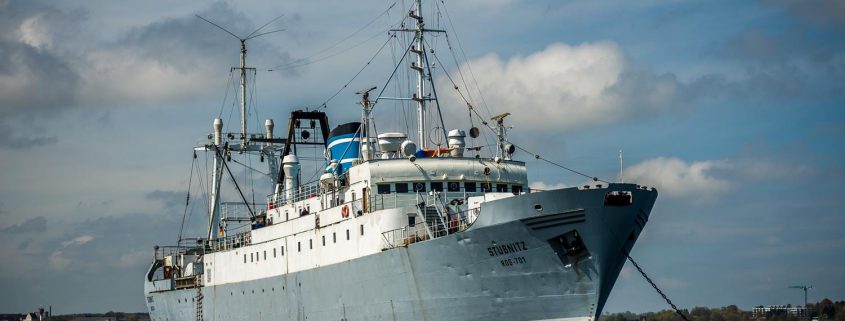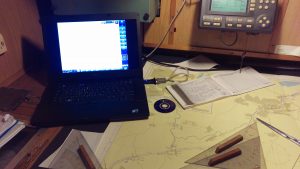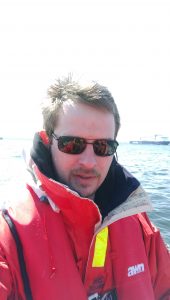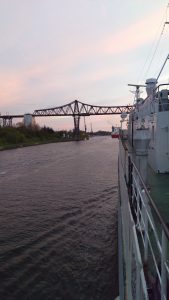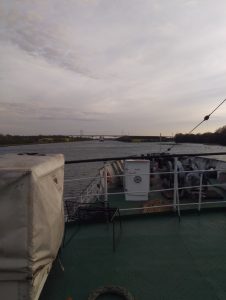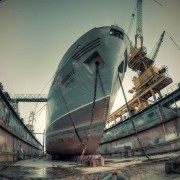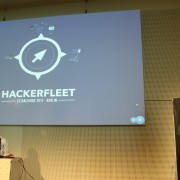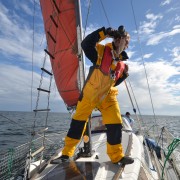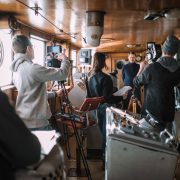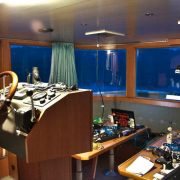New ECDIS for MS Stubnitz
Background
ECDIS stands for Electronical Chart Display Information System, so an electronic nautical chart. The ECDIS of MS Stubnitz was over 10 years old when I was asked if I could restore the computer. After reviewing the hardware, the decision was made quickly – the old computer needs disposal of and a new computer has to be installed. The software was also already 10 years old, but not the chart data.
The Hull of MS Stubnitz must be examined every 5 years by divers, whether it still fulfills the strict safety requirements, this can not happen at the current mooring in Hamburg, since the water is too muddy. The nearest place with clear water, is in the Baltic Sea, the Bay of Kiel. It was initially planned to install the new ECDIS before departure to Kiel.
Sponsors
On behalf of MS Stubnitz I would like to thank the c-base member Ryo, who provided a rarely used Dell Professional laptop and equipped it at his own expense with an SSD and more RAM and provided it free of charge to MS Stubnitz.
Secondly, I would like to thank the company SevenCs for providing the latest version of the software Orca Master G2. This is the second time that the company SevenCs is helping out MS Stubnitz in this way.
Getting there
Due to a private appointment, I unfortunately could not go on board before departure, so I had to go to Kiel and boarded there, while the ship was lying in the roads. (The roadstead is an anchorage or mooring in front of a harbor or in front of the mouth of a waterway where ships can wait.)
I went from Berlin via Hamburg and Kiel by Bus to the small village of Heikendorf near Kiel, where I was picked up at the ferry port by the rescue boat. Here I had the opportunity to experience something I wanted to do for a long time – use a pilotsladder to climb from the rescueboat aboard a ship, just like a pilot. Later captain had to be picked up – here I had the opportunity to find out how it feels when you are hauled on board by crane in the rescue boat. Both of them were filmed, the video is at the end of this blog post.
Installation
While the crew prepared the ship for the departure back to Hamburg I started with the installation of the new system. Unfortunately, we had no properly opto-electronically separate RS232 to USB adapter, so I was forced to make-do with a consumer device and while lifting the anchor I downloaded more drivers via hotspot from my phone.
After some fiddling I got it working partially – for unexplainable reasons the connection broke off every few seconds and was then re-established, we were already far in the North-Baltic Sea channel when it began to function. For the next journey, a new adapter has to be bought, which corresponds to the standards for seagoing ships. Then one can also find out whether the problem is with the laptop or with the adapter.
Success
The new device has been installed and set up and works so far. The existing problems with the data transmission of the NMEA0183 signal still exist, but will most likely be solved by the installation of a new RS232 to USB adapter.
For the travels I tried the “Story” function of Instagram for the first time. Instagram stories are usually recorded in portrait-format, which I have consistently adhered to. I like the result only partially, and I probably will not be a big fan of the Instagram storys. The next Instagram-Story I will try to consistently use landscape-format, lets see how this looks and feels.
Video
Camera by Dr. Frank Roland Fliess, thanks for the permission to use the recordings.


